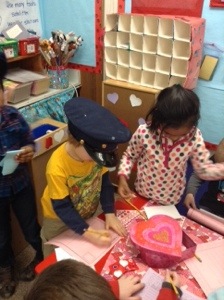It nears. I’ve been trying to keep the thoughts and worries at bay, but now there is no controlling it. We have March, April, and a week of May to get our evidence together and prove we deserve to be teachers.
Now, don’t get me wrong. I think it is absolutely necessary for us to prove ourselves as being at least somewhat competent before we are handed the humbling responsibility of educating children. And I think throughout our career, we should be given the kind of support and professional learning opportunities to grow in our competency.
But I can’t help but be skeptical of any kind of high-stakes assessment that is far enough removed away from context that we start being worried, what are we really being judged on? What will the assessors of the edTPA be valuing when watching our video evidence? When reading our words we have written to try to prove ourselves as teachers. Any cursory look at the rubrics will tell you that there are certain aspects of teaching being seen as more valuable than others, and it is clear with the use of academic jargon the attempt to “professionalize” teaching in a way that makes me thing: “Are you assessing me on my teaching? Or my ability to decipher what you are telling me to do?”
A while ago, when the mumblings and grumblings of the edTPA first began, I Googled the edTPA and found a blog post from Diane Ravitch’s blog, “What is edTPA and Why Do Critics Dislike It?” I think there’s some valid criticism there, even while I think the edTPA has its value as a way to “award” certification.
If you read the blog post linked, and think about what you know of teaching, do you think the edTPA is the best possible way to judging competency? Can you think of a better, plausible way?

